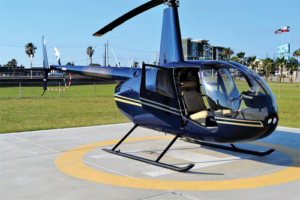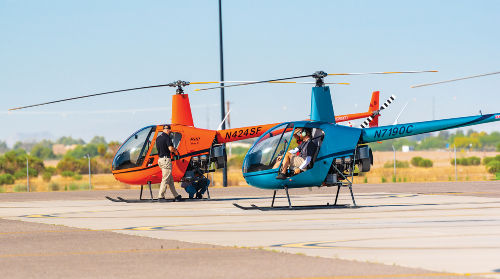By Gene Trainor, FAA Compliance & Airworthiness Division
Pilots, mechanics, and owners and operators of helicopter infrastructures — heliports and helistops — may want to be on the lookout in December for a revised FAA Advisory Circular (AC) that outlines recommended standards and guidelines for the planning, design, and construction of helicopter infrastructure.
This development comes at a time when helicopter infrastructure (heliports) and vertiports — landing spaces for vertical takeoff and landing (VTOL) aircraft — may increase in numbers, traffic volume, and importance nationwide as people and businesses look for faster and more efficient ways to get around.
Many ideas have emerged in recent years where helicopters can take passengers from downtown New York City to area airports. Other ideas would call for all-electric or hybrid-electric lithium battery or hydrogen-fuel-cell-powered VTOL that can serve as urban air taxis or alternatives to more traditional transportation options.
Historically, the FAA has taken an advisory role when it comes to standards for private-use heliports, which make up the vast majority of heliports. A similar advisory approach is expected for vertiports.
On December 16, 2020, the FAA Office of Airport Safety and Standards released a draft update to the Heliport Design Advisory Circular (AC) for industry comment. The AC outlines recommended standards and guidelines for the planning, design, and construction of heliports. According to the FAA Airport Design and Construction Branch, the final updated AC is expected later this year. An AC for vertiport design is under consideration while an interim vertiport design engineering brief is under development.
The final Heliport Design AC, to be released by the FAA Office of Airport Safety and Standards, provides recommended standards “for establishing an acceptable level of safety, performance, and operation for heliports.” It also is intended to “assist engineers, architects, and city planners to design, locate, and build a suitable heliport.” The sweeping document covers everything from the design elements that make up a heliport to structural and safety recommendations.
Researchers from the FAA Technical Center, in collaboration with other researchers from industry stakeholders, published a white paper in May finding that heliports that followed FAA guidelines had significantly fewer accidents than those that did not.
The researchers looked at 185 helicopter infrastructure accidents from 1965 through 2013, and discovered that 166 accidents (about 90%) could be attributed to improper infrastructure (airport, helideck, heliport, helistop) design and/or operations. In some cases, fences were too close and too high at take-off and landing areas, wires were installed near heliports without regard to their impact on the heliport’s airspace, or the heliports were built in places that had “incompatible” airspace.

For several years, the FAA heliport design AC has stated that their design standards assume there will never be more than one helicopter within a heliport’s final approach and takeoff area (FATO) and its associated safety area. However, the researchers found main rotor blade strikes between two helicopters either both turning, but more often one shut down and the other turning, or some area of the fuselage coming in contact with the main or tail rotor blades, usually involving parked helicopters or some other hazardous condition, according to one of the paper’s authors from the FAA Technical Center.
The FAA is focused on continually improving design, construction, and operation guidelines for heliports and on educating pilots about heliport safety. The FAA’s top priority is the safety of pilots and those who work with and around them.
This article was originally published in the September/October 2021 issue of FAA Safety Briefing magazine. https://www.faa.gov/news/safety_briefing/





